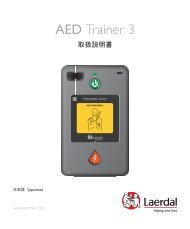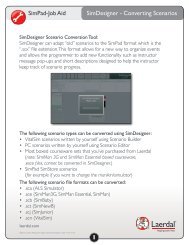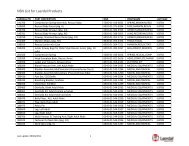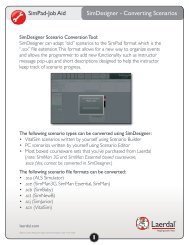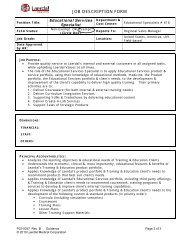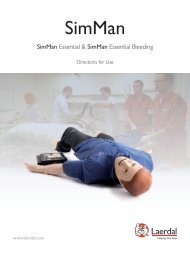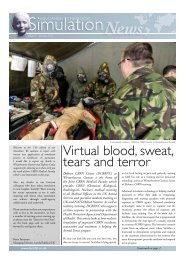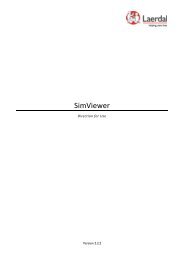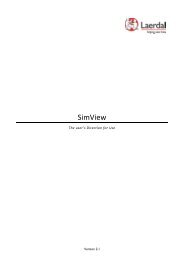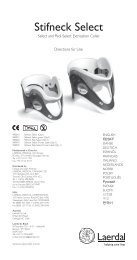Verbesserung der CPR mithilfe von ... - Laerdal Medical
Verbesserung der CPR mithilfe von ... - Laerdal Medical
Verbesserung der CPR mithilfe von ... - Laerdal Medical
Create successful ePaper yourself
Turn your PDF publications into a flip-book with our unique Google optimized e-Paper software.
Compression quality is better with <strong>CPR</strong> meter<br />
A study by Skorning 18 evaluated <strong>CPR</strong> Meter. Depth improved from 45% correct to 73% correct and rate<br />
improved from 64% to 95% correct. Leaning improved from 4.4% to 0.2%.<br />
Q<strong>CPR</strong> feedback improve leaning<br />
Niles 19 found that automated feedback helped reduce leaning from 50% to 27% of all chest<br />
compressions in a series of in‐hospital pediatric arrest.<br />
Compression quality is better with a combination of feedback and debriefing.<br />
The combination of feedback and debriefing improved compression rate compliance from 45% to 84%<br />
and resulted in a doubling of participants providing compressions of both adequate rate and depth,<br />
from 29% vs. 64% 20 .<br />
Patient outcome is better with a combination of feedback and debriefing.<br />
This study by Edelson 21 report an increase in ROSC, a decrease in ventilations per minute and an<br />
increase in chest compression depth when MRx with QXPR was complemented with debriefing.<br />
Feedback is also helpful in helicopter and moving ambulance<br />
Real time automated feedback improves certain aspects of <strong>CPR</strong> quality in flying helicopters and moving<br />
ambulance vehicles. The effect of feedback guidance was most pronounced for chest compression rate. 22<br />
Voice prompts in addition to audiovisual feedback did not add value.<br />
In this clinical trial 23 , compression depth and rate, as well as survival was good both with and without<br />
voice prompts in addition to visual feedback and a metronome.<br />
Q<strong>CPR</strong> require mattress compression<br />
When <strong>CPR</strong> is performed in a bed, mattress compression and hence accelerometer error is was 13mm.<br />
When a stretcher was used, the error was 4mm 24 . These data suggest that about 15mm must be added<br />
for <strong>CPR</strong> in a bed, according to Monsieurs 25 .<br />
RefShare<br />
All papers cited are available on RefShare – our library of medical science.<br />
To access, go to Knowledgelink, select tools and select Refshare. Here you can search using keywords.<br />
Helge Myklebust, August 2012



